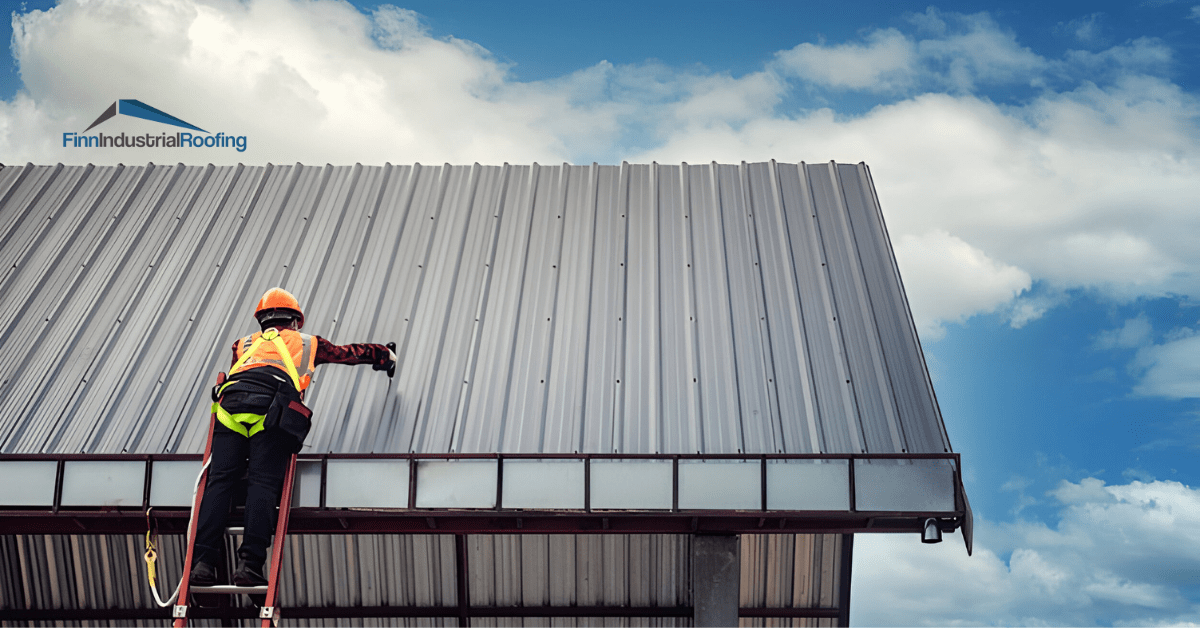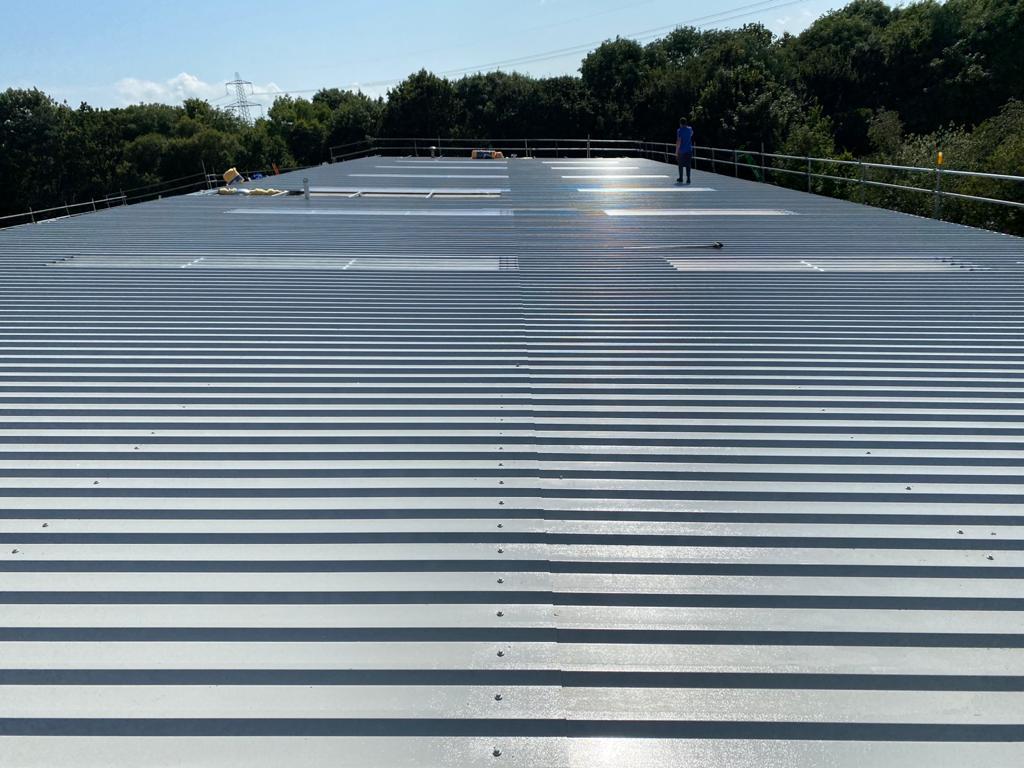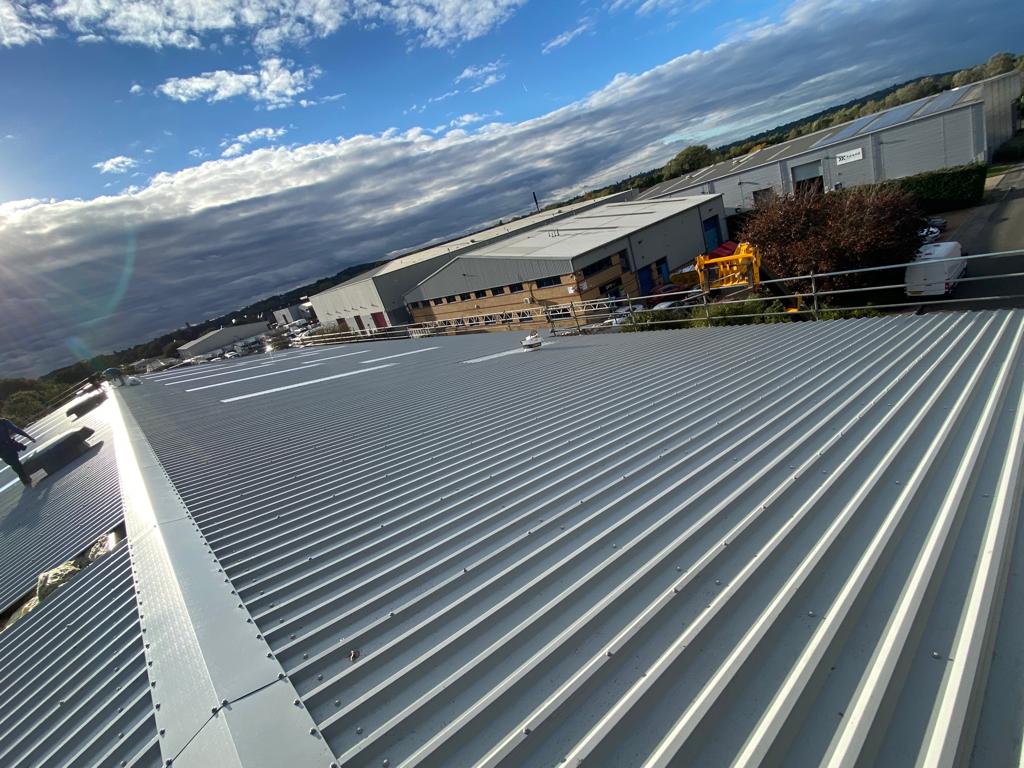Most Durable Cladding Materials
Perfect for Harsh Weather Conditions
Aluminium Cladding: Corrosion-resistant, lightweight, ideal for coastal and industrial zones
Stone Cladding: Exceptionally long-lasting, virtually maintenance-free
Galvanised Steel: Tough and impact-resistant, with a strong protective coating
Terracotta Panels: Naturally weather-resistant with high thermal performance
Understanding the Benefits of Roof Cladding
Cladding is widely used in construction projects for the many advantages it offers. The process involves coating one building material with another to enhance its safety, durability and visual appeal. When it comes to roofs, cladding serves both protective and decorative purposes, making it an increasingly popular choice for industrial and commercial buildings throughout Dorset.
Our experienced team apply roof cladding using a range of materials, including plastic, concrete, clay, asphalt, metal or and terracotta. The ideal choice often depends on the desired finish, climate considerations, and available budget. Each material comes with its own set of subtypes. For example, in the category of timber, options range from cedar and pine to plywood. In metal cladding, popular selections include galvanised steel and aluminium.
Safeguard and Protect
One of the primary reasons to opt for cladding is the added layer of protection it offers to a building. Cladding not only strengthens the structural integrity but also acts as a barrier against the elements. It has been shown that buildings with cladding are more resistant to environmental stressors such as extreme temperatures, high winds and leaks/water ingress.
In regions prone to high humidity, heavy rainfall, or strong winds, cladding can help buildings stand up to harsh weather and minimise the risk of cracks, leaks, and moisture-related damage. The enhanced durability it provides can significantly extend the life expectancy of your roof and façade.
Low Maintenance Requirements
Compared to finishes like painting, which demand frequent touch-ups and upkeep, cladding stands out as a low-maintenance solution. Most cladding systems require little more than occasional washing to maintain their appearance and functionality.
Extruded aluminium, in particular, is known for its resilience and stability, making it a leading choice for cladding facades, roof edges, column covers, and canopies. Vinyl cladding is another user-friendly option—made from PVC panels that are easy to fit, it typically needs only a power wash every few years to keep it looking fresh. Vinyl is also straightforward to cut, size, and replace.
At the higher end of the scale, stone or brick cladding provides a virtually maintenance-free finish. While installation costs for these materials can be higher, they require no ongoing maintenance, which can offer savings over the long term.
Aesthetic Value
Beyond function and durability, cladding plays a major role in shaping the visual identity of a building. A thoughtfully chosen cladding finish can dramatically enhance a property’s exterior, adding texture, colour, and style. This aesthetic transformation not only boosts kerb appeal but may also increase the property’s market value.
To meet the growing demand for stylistic variety, cladding manufacturers now offer a wide array of finishes and colour options. Granite cladding, for instance, is available in both polished and rough textures and can be sourced in several colours. Brick cladding offers styles ranging from smooth white stone to rustic red tones. Stone cladding is particularly versatile, with colours like charcoal and cream among the most sought-after.
Where to Use Cladding on Your Building
Cladding isn’t just for roofs. These areas also benefit greatly:
Exterior Walls: Adds insulation and weather resistance
Canopies and Awnings: Improves visual appeal and extends lifespan
Columns and Pillars: Enhances structural style and hides imperfections
Roof Overhangs and Fascias: Protects timber elements from rot and decay
🛠️ Maintenance
✅ Cladding: Low maintenance — usually just needs a rinse now and then
❌ Painting: High maintenance — frequent touch-ups and repainting required
⏳ Lifespan
✅ Cladding: Long-lasting (20–50+ years depending on material)
❌ Painting: Shorter lifespan (typically 5–10 years)
🌦️ Weather Protection
✅ Cladding: Excellent resistance to rain, UV rays, wind, and moisture
⚠️ Painting: Moderate protection, may fade, peel, or crack over time
💷 Long-Term Cost
✅ Cladding: Cost-effective over time — fewer repairs and replacements
❌ Painting: More expensive in the long run due to regular upkeep
🎨 Aesthetic Range
✅ Cladding: Huge variety of textures, finishes, and colours
⚠️ Painting: Limited options, depends on surface and paint type
Final Thoughts
When planning your next roofing or building project, consider the lasting benefits of cladding. Whether you’re looking to improve structural durability, reduce maintenance costs, or give your property a fresh visual appeal, cladding is a proven solution that delivers across the board. With straightforward installation and a wide selection of materials and finishes, cladding remains one of the most effective investments for extending the life and value of your building.














